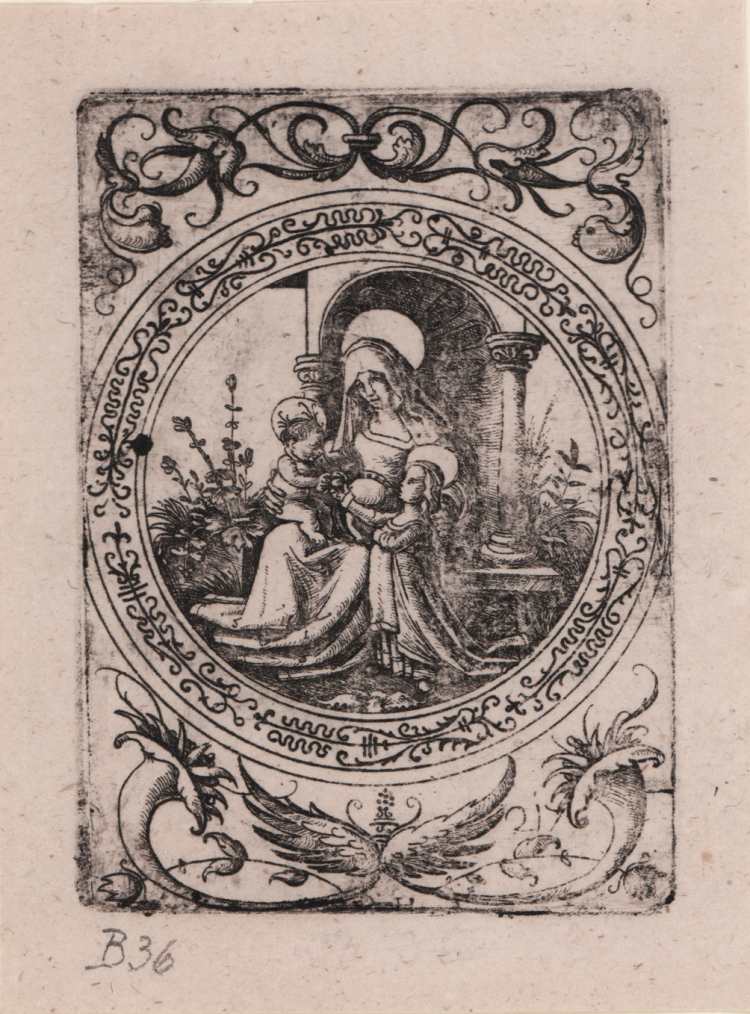


| Reference: | s30534 |
| Author | Daniel HOPFER |
| Year: | 1510 ca. |
| Measures: | 70 x 92 mm |


| Reference: | s30534 |
| Author | Daniel HOPFER |
| Year: | 1510 ca. |
| Measures: | 70 x 92 mm |
Etching on iron, signed with monogram in the plate, lower center.
Example of the second state of two, with the number.
A good impression on laid paper, thin margins, in good conditions.
Impression from Funck series, number “217” added at lower right.
St Anne with the Virgin and Child, set within an ornamented circular frame; grotesque ornaments above and below.
|
Bartsch VIII.483.36.
|
Daniel HOPFER (Kaufbeuren 1470 circa - Ausburg 1536)
|
In 1493 he gained rights as a citizen of Augsburg and was added to the city’s roster of painters and register of taxpayers. He married in 1497. Working in Augsburg during the city’s patronage as a leading humanist centre by Maximilian I, Hopfer was probably the first etcher of armour to pull impressions of etchings on paper. He was known as a designer of ornamental etchings that were applied to armour made in Augsburg, though it is not clear whether he actually etched on the armour; in most cases he probably handed his designs over to armourers who manually applied and etched the ornament. The one surviving piece of signed Hopfer armour, a shield, dates from the year of his death (1536; Madrid, Real Armeria).
|
|
Bartsch VIII.483.36.
|
Daniel HOPFER (Kaufbeuren 1470 circa - Ausburg 1536)
|
In 1493 he gained rights as a citizen of Augsburg and was added to the city’s roster of painters and register of taxpayers. He married in 1497. Working in Augsburg during the city’s patronage as a leading humanist centre by Maximilian I, Hopfer was probably the first etcher of armour to pull impressions of etchings on paper. He was known as a designer of ornamental etchings that were applied to armour made in Augsburg, though it is not clear whether he actually etched on the armour; in most cases he probably handed his designs over to armourers who manually applied and etched the ornament. The one surviving piece of signed Hopfer armour, a shield, dates from the year of his death (1536; Madrid, Real Armeria).
|